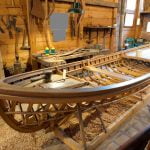Carpentry vs woodworking: is building furniture carpentry vs woodworking? The distinction between the two skilled trades is often a topic of confusion. In this article, we will delve into the defining differences between carpentry and woodworking, exploring their individual histories, specific skills and techniques, tools and equipment used, types of projects undertaken, educational paths, and training required. Additionally, we will examine the current trends and opportunities within these trades and how they may potentially intersect in the future.
Carpentry and woodworking are both integral to the creation of furniture and structures using wood as the primary material. However, they are distinct disciplines with their own unique approaches and applications. Understanding these differences can provide insight into the specialized nature of each trade and shed light on the specific contributions they make to the field of craftsmanship.
By examining the origins and development of carpentry as a skilled trade, as well as tracing the historical roots of woodworking as a traditional craft, we can gain a deeper appreciation for their evolution over time. This exploration will also provide context for the specific skills and techniques utilized in each discipline, along with an examination of the tools and equipment that are traditionally associated with carpentry and woodworking.
History of Carpentry
Carpentry has a long and rich history, dating back to ancient times. The origins of carpentry can be traced back to the earliest civilizations, where skilled craftsmen used wood to construct buildings, furniture, and other structures. In ancient Egypt, for example, carpenters played a crucial role in the construction of pyramids and temples, showcasing their expertise in working with wood.
As time progressed, carpentry continued to evolve as a skilled trade, with the development of new tools and techniques. During the Middle Ages, carpentry became more specialized, with craftsmen focusing on specific aspects such as joinery and timber framing. This period also saw the emergence of guilds and apprenticeship programs, which further contributed to the refinement of carpentry as a distinct trade.
The Industrial Revolution brought about significant changes in the field of carpentry, with the introduction of new machinery and mass production techniques. Despite these advancements, traditional craftsmanship remained highly valued in many cultures around the world.
Today, carpentry continues to be an integral part of construction and woodworking industries, with modern carpenters incorporating both traditional techniques and innovative methods to create high-quality structures and furniture. In conclusion, it’s clear that the history of carpentry is deeply rooted in tradition yet adaptable to new technologies and methodologies.
History of Woodworking
Woodworking has a long and rich history, dating back to ancient civilizations where humans first began working with wood to create tools, structures, and decorative items. The earliest known woodworking tools have been found in Ancient Egypt, dating back to 3,000 BC. These tools were used for furniture making, boat building, and architectural purposes. Throughout the centuries, woodworking techniques have evolved and diversified across different cultures around the world.
The Renaissance Period
During the Renaissance period in Europe, woodworking experienced a significant growth with the development of new tools and techniques. This era saw the emergence of skilled woodworkers who produced intricate furniture pieces, decorative carvings, and elaborate wooden structures for churches and palaces. Woodworking also became an esteemed craft during this time, leading to the establishment of guilds and associations dedicated to promoting high standards of craftsmanship.
Industrial Revolution
The Industrial Revolution brought mechanization and mass production to the field of woodworking. With the invention of steam-powered machinery and advanced cutting tools, woodworking processes became more efficient and accessible. This led to an increased demand for wooden products such as furniture, cabinetry, and building materials. However, it also resulted in a shift towards standardized designs and away from the handcrafted traditions of woodworking.
Woodworking has continued to evolve in modern times with the incorporation of new materials, technology, and design trends. Today, there is a resurgence of interest in traditional woodworking methods and artisanal craftsmanship as people seek unique, handmade pieces that showcase the beauty and natural qualities of wood. As such, woodworking remains an integral part of our cultural heritage while also adapting to contemporary needs and preferences.
Skills and Techniques
When it comes to building furniture, the distinction between carpentry and woodworking becomes evident in the specific skills and techniques utilized in each discipline. While both carpentry and woodworking involve working with wood, they differ in terms of the skills required and the techniques employed.
Carpentry Skills and Techniques
Carpentry involves constructing, installing, and repairing structures made of wood or wood substitutes. Carpenters are skilled in using precise measurements, cutting, shaping, and joining pieces of wood to create functional structures such as houses, buildings, and wooden fixtures. They often work with heavy-duty power tools such as saws, drills, and nail guns to complete their projects.
One of the primary skills of carpentry is the ability to interpret blueprints and follow building codes to ensure structural integrity. Carpenters also need strong problem-solving abilities to tackle any unexpected challenges that may arise during construction projects.
Woodworking Skills and Techniques
Woodworking focuses on crafting furniture and decorative items from wood using hand tools or machinery. Woodworkers possess a deep understanding of different types of wood and their unique characteristics, allowing them to select the right materials for their projects. They skillfully use hand tools like chisels, planes, and saws to create intricate designs and joinery techniques.
The techniques used in woodworking often require precision and attention to detail. Woodworkers are adept at carving, shaping, sanding, staining, and finishing wood to bring out its natural beauty. Unlike carpenters who often work on large-scale construction projects, woodworkers focus on smaller-scale projects that showcase fine craftsmanship.
Tools and Equipment
When it comes to building furniture, whether it is carpentry or woodworking, the tools and equipment used can vary depending on the specific task at hand. In carpentry, some of the essential tools include hammers, saws, drills, levels, and measuring tape. These tools are crucial for tasks such as framing, constructing structures, and installing fixtures.
On the other hand, woodworking often involves a different set of tools such as chisels, hand planes, carving knives, sanders, and routers. Woodworkers use these tools for shaping and finishing wood to create furniture and decorative items.
In addition to the basic hand tools mentioned above, both carpenters and woodworkers also utilize power tools such as circular saws, jigsaws, nail guns, and power drills. These power tools help in speeding up the process of cutting wood, drilling holes, or fastening materials together. Moreover, with the advancement of technology in recent years, more specialized equipment like CNC machines and 3D printers have also become part of the woodworking industry for creating intricate designs and patterns with precision.
Another important aspect of both carpentry and woodworking is safety equipment. This includes goggles or safety glasses to protect the eyes from flying debris when cutting or shaping wood; ear protection for working with loud machinery; and gloves to provide a better grip on tools while also protecting hands from cuts or splinters.
It is crucial for both carpenters and woodworkers to have a good understanding of how to properly operate and maintain these various tools and equipment in order to work efficiently while ensuring their own safety.
Types of Projects
When it comes to the types of projects associated with carpentry and woodworking, there is a significant overlap in terms of the furniture and structures that can be built. However, there are also some distinct differences in the types of projects that each discipline tends to focus on.
Carpentry projects often lean towards the construction of practical and functional structures such as frameworks, building foundations, wooden walls, and stairs. This is because carpentry is closely associated with the construction industry and the building of houses, commercial buildings, and other structures. Additionally, carpenters may also be involved in the installation of kitchen cabinets, doors, windows, and other architectural elements.
On the other hand, woodworking typically involves creating fine furniture pieces and decorative items such as tables, chairs, cabinets, shelves, and ornamental woodwork. Woodworkers often work with finer materials and focus more on the artistic and aesthetic aspects of their creations. In addition to furniture making, woodworkers may also produce intricate carvings or sculptures using various woodturning techniques.
In summary, while both carpenters and woodworkers work with wood as their primary material, their focus differs in terms of the types of projects they take on. Carpenters are more likely to be involved in construction-related projects while woodworkers are known for crafting fine furniture pieces and decorative items.
Education and Training
Carpentry and woodworking both require specific skills and techniques, but what sets them apart is the educational paths and training required for each.
Carpentry is generally learned through apprenticeships or vocational schools where students receive hands-on training under the supervision of experienced professionals. These programs often last 3-4 years and cover a wide range of skills including framing, installing fixtures, and reading blueprints.
On the other hand, woodworking education can be obtained through technical schools or specialized training programs that focus on the artistic and creative aspects of working with wood. Woodworking programs may include courses in furniture design, joinery techniques, and wood carving.
In terms of certification, carpenters may seek certification from organizations such as the National Association of Home Builders (NAHB) or the Home Builders Institute (HBI) to demonstrate their expertise in the field. Woodworkers, on the other hand, can pursue certification through organizations like the Architectural Woodwork Institute (AWI) which focuses on industry standards for custom millwork and casework.
Overall, both carpentry and woodworking education follow different paths but require commitment, dedication, and passion for working with wood to succeed in these trades.
| Educational Path | Required Training |
|---|---|
| Carpentry | Apprenticeships or vocational schools |
| Woodworking | Technical schools or specialized training programs |
The Future of Carpentry and Woodworking
In conclusion, the future of carpentry and woodworking is filled with exciting trends and opportunities for those skilled in these trades. As the demand for custom, high-quality furniture and structures continues to grow, both carpenters and woodworkers will find themselves well-positioned to capitalize on these opportunities. The potential crossover between the two disciplines is also an intriguing development, as more professionals are incorporating aspects of both carpentry and woodworking into their skill sets.
With advancements in technology, there is an increasing trend towards using sustainable materials and environmentally friendly practices in both carpentry and woodworking. This presents an opportunity for professionals in these trades to adapt their techniques and processes to align with this growing consumer demand. By staying abreast of current trends and embracing new technologies, carpenters and woodworkers can position themselves at the forefront of the industry.
The potential crossover between carpentry and woodworking opens up new possibilities for professionals in these trades. Carpenters may find that incorporating traditional woodworking techniques into their skill set allows them to expand their repertoire of projects.
Similarly, woodworkers who integrate structural elements typically associated with carpentry may find themselves able to take on a broader range of projects. Ultimately, as the lines between these two disciplines continue to blur, the future looks bright for individuals skilled in both carpentry and woodworking.
Frequently Asked Questions
Is There a Difference Between Woodworking and Carpentry?
Woodworking and carpentry are closely related, but there is a difference between the two. Carpentry typically refers to working with structural items like buildings and frameworks, while woodworking encompasses a broader range of projects including furniture making and wood carving.
Does a Carpenter Build Furniture?
Yes, a carpenter can build furniture. In fact, many carpenters have the skills and expertise to create beautiful and functional pieces of furniture using their knowledge of wood materials, joinery techniques, and design principles.
What Is Furniture Carpentry Called?
Furniture carpentry is often referred to as “cabinetmaking” or “furniture making.” This specialized form of carpentry focuses on crafting high-quality furniture such as tables, chairs, cabinets, and other household items that require precision and attention to detail for both aesthetic appeal and functionality.

Hi everyone! I’m a woodworker and blogger, and this is my woodworking blog. In my blog, I share tips and tricks for woodworkers of all skill levels, as well as project ideas that you can try yourself.





